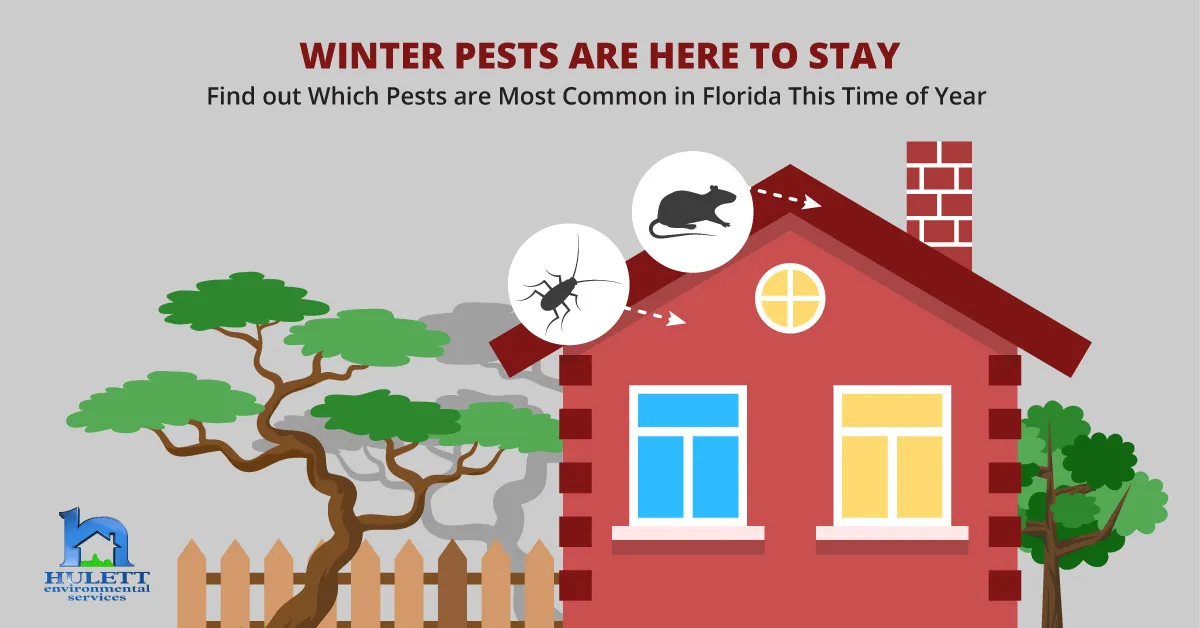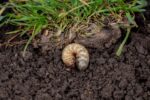
Winter Pests are Here to Stay: Pests Most Common in FL Winter
This winter, as a large part of the US battles blizzards and frigid temps, Southern Florida, known for her gentler climate with more moderate temperatures welcomes visitors to catch a break from the cold and alleviate their winter blues, in her soothing sunshine. Know who’s not so welcome in Southern Florida during winter months? It’s those pesky household pests that insist on invading your home when Florida temps drop a few degrees below 60 for a few days?
The usual suspects making themselves at home this winter include insects and rodents
While some insect species, such as beetles dig into the ground to weather the winter outdoors, others prefer the warmth and resources of your home. Some of the usual suspects likely to be making an appearance in your greater Miami or Florida Keys area home this winter include ticks, ghost ants, carpenter ants, silverfish and cockroaches. Along with insects, warm-blooded rodents, such as rats and mice, also prefer your dark, warm attic or convenient crawlspaces and wall voids to hunker down in during cold spells. House mice and roof rats take this quiet time to build nests and start families, while Norway rats, more acclimated to the cooler temps don’t usually take up residence in your home but come in for food they take back to their nests.
In addition to making nuisances of themselves, insects and rodents destroy property and pose health threats to humans and pets.
Cohabitating with humans since the dawn of civilization, rodents have been at the center of historic world-wide plagues, throughout history. Disease-ridden rodents, infected by ticks and other vector insects, played heavily into the fall of the Roman Empire and brought about the Great Bubonic Plague. Rodents also cause electrical damage, as well as structural damage, because they must chew on anything, including wiring and walls in order to keep their teeth in check. It gets worse. Cockroaches and other insects that feast on rodent excrement can cause a serious respiratory condition, called Hantavirus, when rodent feces and urine particles become airborne during cleaning. Cockroaches crawling around in trash cans and garbage bins transfer bacteria and pathogens to food sources in your home. Some cockroaches also cause allergic reactions in children and sensitive people. Carpenter ants, second only to termites in their capacity to destroy wooden structures, unlike termites, don’t actually eat wood but tunnel through it, in order to nest inside the wood. Also, although carpenter ants don’t damage wood at the same incredible rates as subterranean termites, they can go undetected for long periods of time inside your home.
Signs of insects and rodents in your home can manifest in various ways
Some winter household pests are easier to detect than others.
- Ghost ants, despite their name and their miniscule size, nest indoors under cabinets, in wall voids, behind cabinetry, in between books, in potted plants and other inconspicuous places. Ghost ants foraging from food sources in your kitchen to their nests can be an obvious sign that you might have a ghost ant infestation in your home, although indoor foragers may come from a nest outside.
- Carpenter ants can be detected by the sawdust they produce from burrowing through wood in your home, or in the altered appearance of affected wood.
- Smaller, German, Asian and brownbanded cockroaches hide in dark, sheltered places in attics, storerooms, kitchens and bathrooms during the day and come out at night to feed. They can be found under sinks or drain boards, in cabinets and cupboards, behind drawers, around pipes, and around windows and doorframes.
- Larger cockroaches, including the Florida wood cockroach and American, Australian, brown and smokybrown cockroaches, often known as palmetto bugs are generally outdoor types and may cause hysterics when they come indoors, due to their size and erratic movements.
- Silverfish, with a voracious appetite are drawn to starchy foods and can be found in closets, pantries, bookshelves, attics and anywhere cereals, flour, paper and fabric are stored in your home. Tell-tale signs include affected books, fabrics or starchy food stores.
- Rodents can often make scurrying, squeaking and chewing noises in your walls and attic. Droppings, found near food sources and evidence of chewed food packaging indicate a rodent issue. You may even spot rodents in your home.
Winter is here and although South Florida’s seasonal change is subtle, when temperatures do drop at times, insects and rodents might try to make a beeline for your home looking for warmth and food. These pests can wreak havoc on your winter, if left to their own devices. Hulett Environmental Services encourages South Florida homeowners to contact a pest control professional at the first indication of insects and rodents attempting to winter in your home. Hulett ensures preventative measures, such as regularly scheduled pest control services that create a pest barrier around your property with our Healthy Home guarantee. To set up a pest barrier for your home and/or address an existing indoor pest issue this winter, contact Hulett Environmental Services today!



